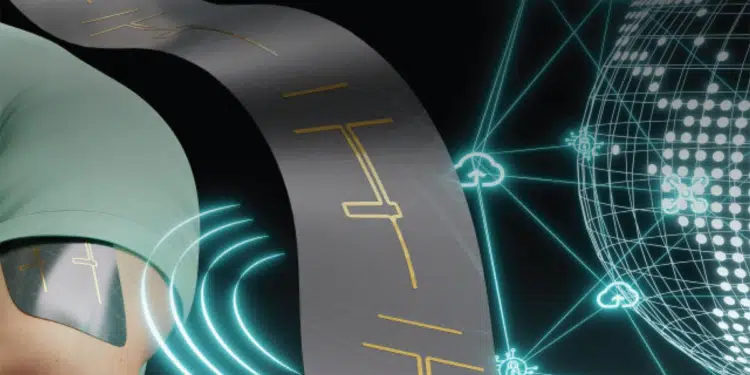Researchers at King Abdullah University of Science and Technology (KAUST) have developed a dielectric ink from the polymer ABS and ceramic particles. By screen-printing it onto glass, and then peeling off the dried result, flexible large-area dielectics of tunable thickness and permittivity can be made, as thin as a few microns and with a dielectric loss of 0.0063 at 28GHz.
A method that combines screen-printable composite and metallic inks could make foldable electronics easier and cheaper to manufacture at industrial scales. These devices, developed at KAUST, can be mounted on various supports, including nonplanar surfaces, and could enable many Internet of Things applications.
Next-generation technology such as automotive radars for self-driving cars, smart buildings and wearable sensors will depend more heavily on the high-frequency millimeter-wave band, including 5G. To date, large-scale manufacturing approaches to make foldable electronics have focused on developing metallic inks and printing conductive patterns and have overlooked dielectric substrates.
There have been a range of barriers to the use of substrates such as paper and some polymer films in foldable electronics. These substrates involve fabrication processes that are too constraining and complex for mass production and cannot produce multilayered or ultrathin flexible devices. They also have a dielectric loss that exceeds the requirements for millimeter-wave devices.
Atif Shamim and coworkers have now devised a composite ink composed of ceramic particles dispersed in the polymer acrylonitrile-butadiene-styrene (ABS). They used this new ink to generate extremely flexible, large-area dielectric substrates with tunable lateral dimensions, thickness and permittivity. They screen-printed the ink on to glass and, after drying, simply peeled off the substrates from the support. The substrates presented a minimum thickness of a few microns that could be increased through successive printing passes. They also exhibited a low dielectric loss at 28 gigahertz, which is suitable for 5G antennas.

































